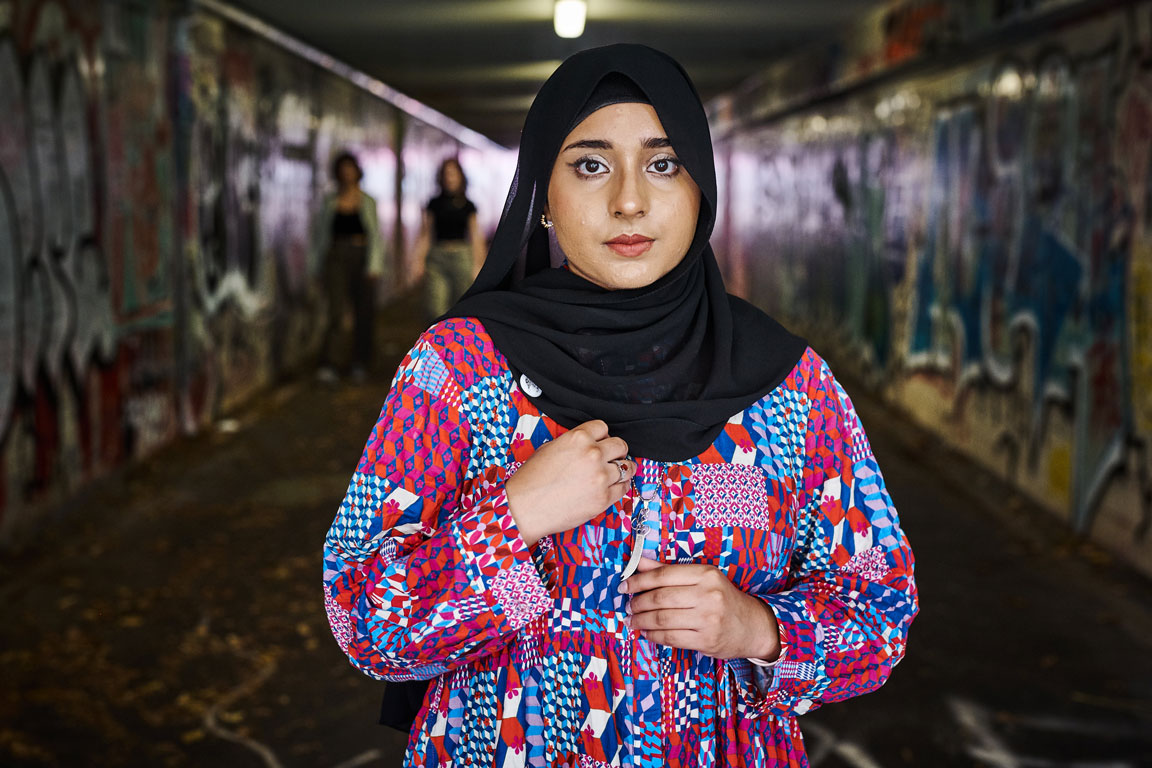The Aqeeq, the Alam Panja, the Zulfiqar and the Sajdagah and Tasbeeh: objects used in the daily practice of Shi’a Islam monumentally turned to symbols of resilience and resistance in Fatima Naqvi’s ‘Artefacts of a Revolution’. This body of work by the talented emerging artist carries the great responsibility of “[servicing their] community what [they have] always deserved: representation, respect, admiration and positive press.”
A Pakistani-Australian Shi’a Muslim artist, Fatima Naqvi’s work is highly reflective of her efforts in decolonising the contemporary art space seen within each stroke and soft blend of graphite. The body of work consists of four realistic graphite on paper drawings depicting prominent Shi’a artefacts, exhibited alongside the represented objects and a video piece. Naqvi displays the essence of what it means to be Shi’a: resistance in the face of oppression.
Shi’a Islam is one of the two major sects of Islam. The sect has unjustifiably faced discrimination, rejection, and persecution from non-Shi’a peoples. As said by Naqvi, “Every Shi’a knows of at least one martyr that has been killed in an act of anti-Shia violence,” making this body of work significant in shifting the narrative towards a more devoted and tender representation of the religion. The objects Naqvi draws all hold special significance to her practice, each holding similar messaging of protection, resistance, justice and revolution.
Naqvi is a talented emerging artist, with a deep care and passion for her subject matter, which is embodied in her oeuvre. Her technique employs a soft delicacy in which her care and admiration for her religion is evident through the meditative consideration of detail in the realism of each artefact. Her choices in scaling, best demonstrated in the enlargement of the Aqeeq Ring, are empowering and speaks to her intentions of calling attention to her Shi’a identity. Essentially, in taking up more space on the surfaces she works on, Naqvi demands to also take up space in an art world that has been majorly omitting her identity and experiences, thus decolonising the art space.
The standout piece, however, is the beautiful drawing of the Sajdagah and Tasbeeh. The texture of the piece is tastefully tactile, from the organic softness of the tassel to the pearliness of beads, creating a sense of intimacy that I dare say is somewhat lacking in the other pieces in this body of work. The video piece especially felt disparate from the intimacy of the delicate considerations of linework and blending in the drawings, and the self-assuredness of the represented items within their cases.
Conceptually, Naqvi does a wonderful job. The monochromatic curation of her body of work, with the few moments of colour represented in the objects taken from the artist’s own personal practice and home, evokes a sense of cohesion and vulnerability to the work. In pedestalling the objects on white fabrics and casing them away behind glass, Naqvi brings immense value to objects which are a part of her everyday life, creating them into symbols of her and her community’s strength.
I would like to reiterate Naqvi’s dedication, as a celebration of what remains at the heart of her art: “And finally, I would like to thank Allah (subhanahu wa ta’ala) for making this all happen, for his love, blessings and guidance and for his support in my spiritual pursuit, and for giving me the gift of making.”
It is brave, above all else, to open her home and her spirituality for the world to see, to analyse, accept and scrutinise even. Mashallah*, Fatima Naqvi holds the door open with a pencil, paper and her Shi’a strength.
Mashallah: “God has willed it” — said when something good has happened; an appreciation





